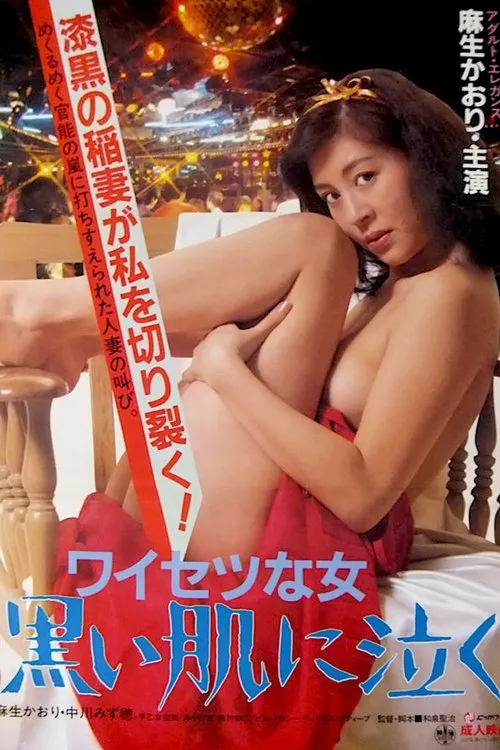Waisetsuna onna: kuroi hada ni naku

Plot
In the 1978 Japanese film, "Waisetsuna onna: kuroi hada ni naku" (meaning "The Worst Woman: Crying in Dark Skin" in English), the plot delves into themes of adultery, friendship, and cultural differences. The story revolves around Kumiko, a seemingly contented wife whose life with her husband, Fumio Asakura, seems idyllic. However, their relationship is not without its peculiarities, as the couple has developed an unusual hobby – they enjoy taking erotic photographs of themselves together during intimate moments. This fascination with capturing their sensual experiences becomes a recurring theme throughout the film. When Fumio is away on a three-day business trip, Kumiko meets up with an old school friend, Fuko. The encounter takes an unexpected turn as Kumiko, accompanied by Fuko, decides to spend the evening at a nightclub in Tachikawa. The disco is a hub for younger crowds, and the two women find themselves caught in a potentially volatile situation after being approached by three aggressive young Japanese men. The encounter with the trio serves as a catalyst for Kumiko's subsequent decision. Feeling threatened and intimidated by the situation, she turns to Fuko for support. It is during this moment of vulnerability that Fuko introduces Kumiko to a foreign element in their lives – a black man named Bill. A friend of Fuko's acquaintance, Bill is introduced as someone who could potentially offer Kumiko an escape from her current circumstances. Bill becomes a convenient and mysterious ally who appears to offer a solution to Kumiko's problems. His character represents a foreign presence in Kumiko's life, introducing an air of exoticism and difference. As the story unfolds, it becomes clear that Bill serves as more than just a guardian figure – his presence sparks a series of events that force Kumiko to confront the underlying tensions in her life. As the days pass, Kumiko and Fuko continue to spend more time together, exploring new experiences and confronting the complexities of their relationships. Their friendship deepens, but their conversations reveal an undercurrent of anxiety and dissatisfaction with their lives. Kumiko's feelings of monotony and desperation come to a head, and she finds herself increasingly attracted to the idea of breaking free from the constraints of her mundane existence. Bill, now an integral figure in Kumiko's life, becomes the focal point for her desires for change. Their relationship blossoms, and Kumiko finds herself torn between her affection for him and her lingering attachment to her husband. This internal conflict serves as a metaphor for the film's exploration of the human desire for connection and the constraints that society places on individuals seeking self-expression. Throughout "Waisetsuna onna: kuroi hada ni naku," the narrative grapples with themes of cultural differences and the tensions that arise when individuals from disparate backgrounds intersect. The story serves as a commentary on the societal expectations placed on women and the consequences of conforming to traditional norms. By introducing the character of Bill, the film raises questions about the nature of relationships and the impact that external influences can have on personal lives. Ultimately, the story evolves into a tragic exploration of the destructive consequences of unchecked desires and the societal pressures that govern human behavior. The film's climax serves as a poignant commentary on the devastating effects of unchecked passion, societal expectations, and the consequences of choosing a path that goes against societal norms. As the narrative unfolds, it becomes clear that Kumiko's decision to abandon her marriage for a life of unbridled passion will have far-reaching consequences that ultimately lead to her downfall.
Reviews
Recommendations



